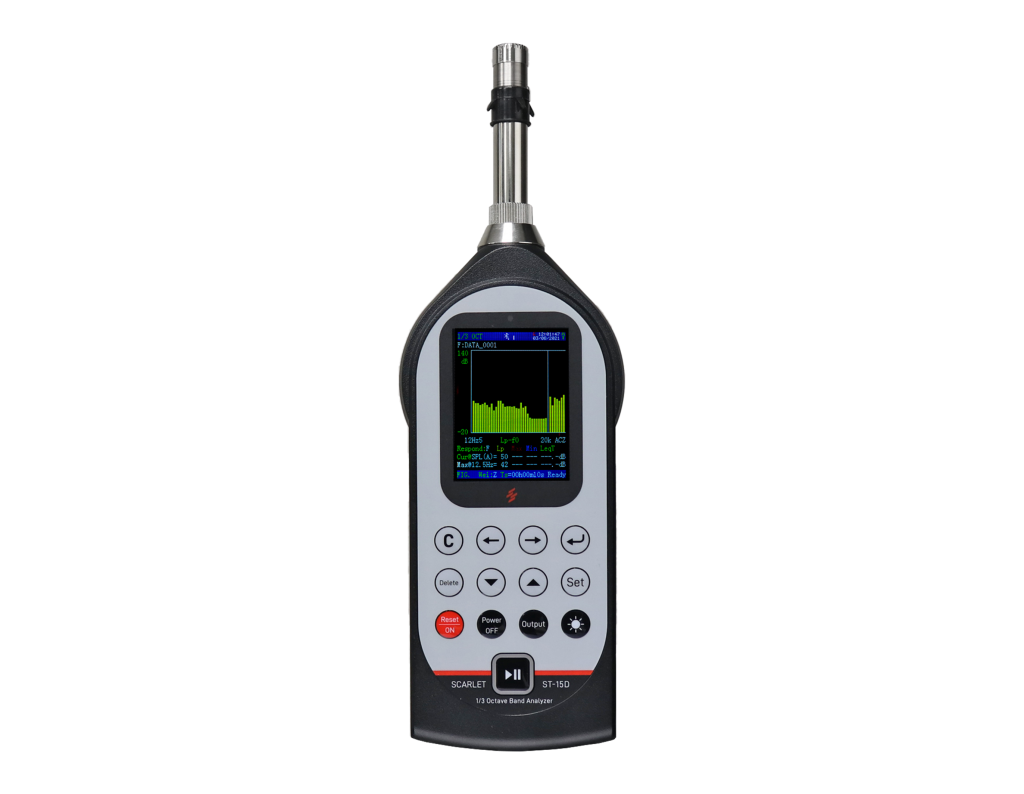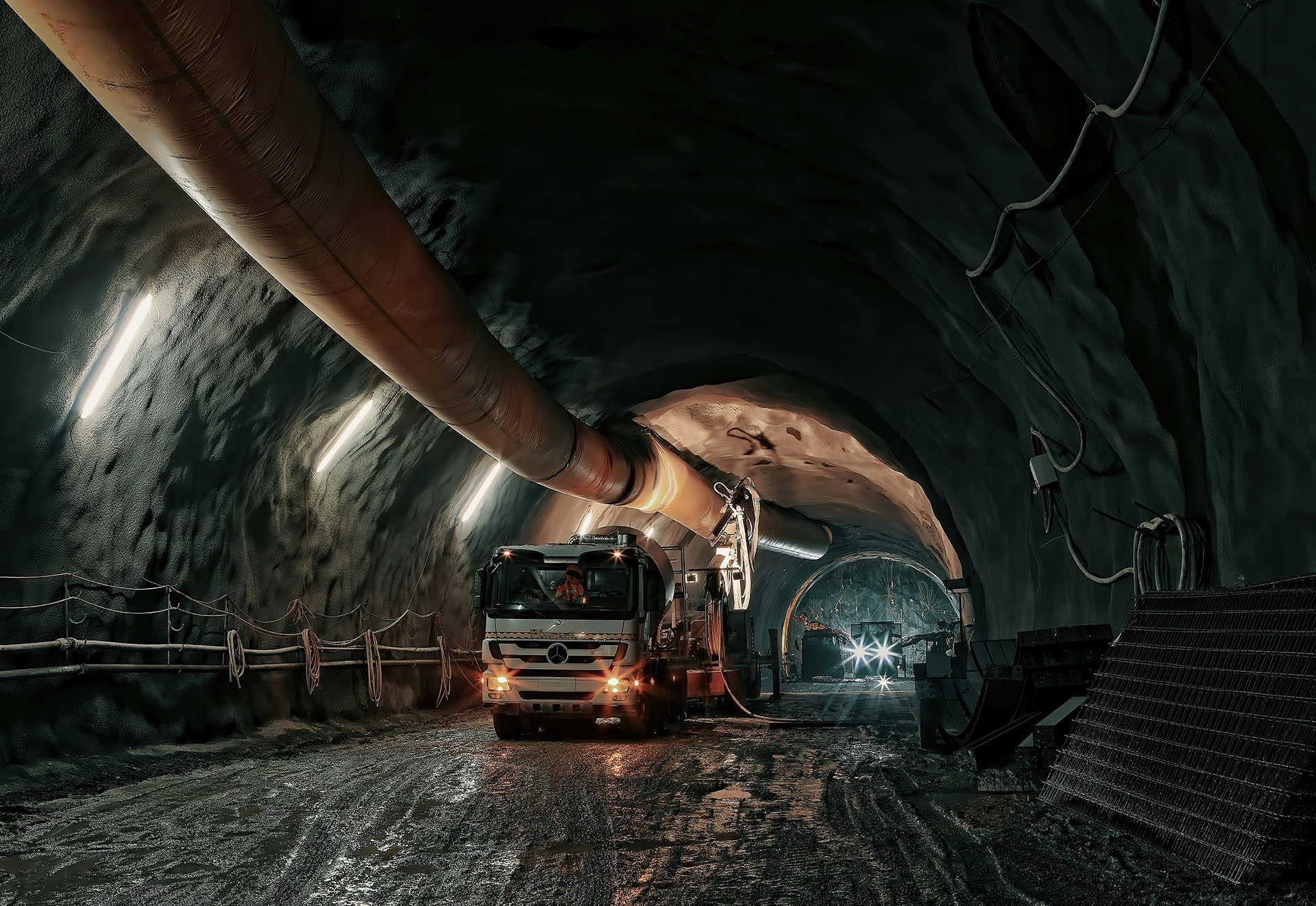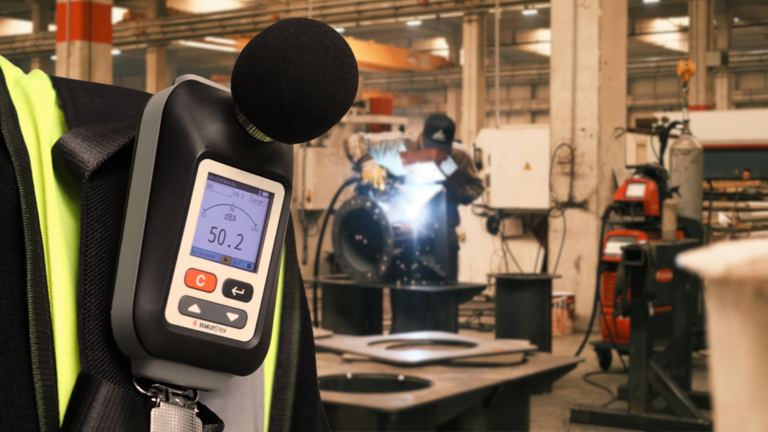What Is a Sound Level Meter?
A sound level meter is a handheld device with a sensitive condenser microphone that turns minute air-pressure changes from sound waves into an electrical signal and shows the resulting level in decibels. Commonly called a sound pressure level (SPL) meter, it follows IEC 61672 Class 1 or Class 2 requirements, so its readings are traceable and legally defensible. Inside the device, the circuitry applies standard A, C, or Z frequency weightings and fast or slow time weightings, so numbers match how our ears judge loudness in different situations.
With those features, a professional sound level meter gives clear, real-time SPL data that helps check workplace exposure limits, community noise rules, or loudspeaker tuning. Whether you are surveying a factory floor or balancing a home studio, using a professional sound level meter keeps the guesswork out of noise measurements and lets you act on solid evidence.
What Is Sound Pressure and SPL?
Sound Pressure (p)
Sound pressure (p) is the tiny rise or fall in air pressure that a sound wave adds to the steady atmospheric pressure around us. Since it is a form of pressure, it is measured in Pascals (Pa). Audible sounds span 20 µPa—the threshold of hearing—to 20 Pa, where discomfort begins.
From Pascals to decibels (SPL)
To shrink that huge numeric range, we convert Pascals to decibels with the equation SPL = 20 × log10(p / p ref). The reference pressure p ref in the air is fixed at 20 µPa, matching the quietest tone an average ear can detect. Meanwhile, a professional sound level meter does this math instantly, so you see one convenient dB value instead of juggling large Pascal numbers.
Why SPL in dB Matters
The ear judges loudness on a logarithmic scale, so equal steps in dB track our perception better than equal steps in Pascals. That’s why safety guides flag 70 dB as “safe” for long listening and why workplace rules need action at 85 dB averaged over an eight-hour shift. Using dB also lets a professional sound level meter report levels in the units that health and legal standards specify.
What Is a Normal Sound Level?
WHO’s Definition of Normal Sound Levels
The WHO states that “background noise level should not exceed 35 dBA” in learning spaces and similar indoor areas, marking this as the normal limit for everyday environments.
Everyday Sound Examples
- Whisper – 30 dB
- Quiet library – 35 dB
- Normal conversation – 60 dB
- Vacuum cleaner – 70 dB
- Busy street traffic – 85 dB
- Lawnmower – 90 dB
- Motorcycle – 95 dB
- Rock concert – 105 dB
- Jet take-off – 140 dB
Remember, a professional sound level meter can confirm that jump.
Health Impacts of Excessive Noise
Levels above 85 dB can damage hearing over time. Furthermore, chronic noise raises stress hormones, disrupts sleep, and brings about fatigue. That’s why checking your surroundings with a professional sound level meter lets you spot risky peaks early and act accordingly.
Types of Sound Level Meters
IEC 60942:2017 / IEC 61672-1 Classes
Professional sound level meters are divided into accuracy classes and processing types. Here’s how they differ:
- Class 1 vs. Class 2 Accuracy
- Class 1: Must remain within ±0.5 dB under reference conditions (e.g., ST-12D). Used in compliance-grade applications such as environmental impact reports, building acoustics, and legal evidence.
- Class 2: Allows up to ±1.0 dB variation. Often used for general surveys or less critical checks.
- Processing Methods (IEC 61672-1)
- Standard RMS (Conventional) Meter: Uses exponential averaging with Fast, Slow, or Impulse time constants. Provides quick, momentary dB readings.
- Integrating Meter: Sums squared, frequency-weighted pressure over time to deliver energy-based metrics such as Leq and SEL.
- Integrating-Averaging Meter: Builds on the integrating meter by adding continuous averaging, logging Leq across the full survey while still displaying real-time SPL data.
- Typical Usage Scenarios
- Standard RMS Meter: Ideal for walk-through checks, sound system setup, or quick community spot checks where only the current dB value matters.
- Integrating / Integrating-Averaging Meter: Required for workplace compliance studies (per ISO 9612) to capture daily dose, peaks, and time history.
- Class 1 Integrating Meters: Essential for environmental impact statements, as they record detailed metrics like night-time Leq, L10, L90, and octave-band data.
Find More Sound Level Meter

Class 1 Sound Level Meter ST-12D
- Class 1 precision in 25-140 dB range
- Measures Leq value with adjustable weightings
- Accurate frequency analysis with octave band filters
- Noise recording to .wav or .mp3

Class 1 Sound Analyzer Meter ST-15D
- Class 1 Complies with IEC-61672-2013
- 10 Hz-20k Hz frequency range
- 20 dB-142 dB measurement range
- Data logging & record function(optional)
- Measures and displays Leq value
- GPS function
- 1/3 OCT analyzer (optional)

Noise Dosimeter ST-130
- Perform OSHA and IEC noise accumulation surveys
- 6 built-in standard dose measurement setups: OSHA/ MSHA/DOD/ACGIH/ISO85/ISO90
- Data logger up to 10,00,000 readings
- Dose Meter Mode: record time stamp, %Dose, TWA8, LEP, 8h, Leq, SEL, LN%, SPLmax, SPLmin, PeakMAX
- Sound Level Meter mode: Leq, PeakMAX & SEL
ANSI S1.4: Ensuring U.S. Compliance
ANSI S1.4—The U.S. Anchor Standard
ANSI S1.4 spells out how a meter must respond to sound, how it is calibrated, and how its uncertainty is stated. Essentially, it divides instruments into Type 1 for precision tasks and Type 2 for general surveys. Any professional sound level meter sold for regulated work in the United States must meet these tolerances before it can be labeled Type 1 or Type 2.
ANSI S1.4 and IEC 61672-1—Two Sides of the Same Coin
IEC 61672-1 sets identical Class 1 and Class 2 limitations for worldwide usage. In 2014, the United States text adopted the IEC wording almost verbatim, eliminating the old “Atlantic divide.” A professional sound level meter that carries both marks, therefore, satisfies OSHA inspectors at home and accreditation bodies abroad with the same certificate.
2024 ASA Reaffirmation Keeps the Standard Fresh
ASA formally reaffirmed Parts 1-3 of ANSI/ASA S1.4 in February 2024. Such kind of reaffirmation signals that the document remains technically sound and needs no revision, so laboratories and buyers can continue using it without adjustment. What is more, it locks in the standard’s harmonization with IEC 61672-1 for at least another five-year cycle.
OSHA Requirements and Scarlet Tech Compliance
OSHA’s Technical Manual states that only meters conforming to ANSI S1.4 Type 2 or better may be utilized for compliance measurements. The noise-exposure rule at §1910.95 writes the same requirement into its appendices. Along these lines, Scarlet Tech lists “IEC 61672-1 Class 1” on products such as the ST-12D, so a single professional sound level meter can be taken from a U.S. factory floor to an international audit with no extra paperwork.
Ready to Take the Next Step?
Choosing the right professional sound level meter ensures your measurements are accurate, compliant, and defensible. Whether you’re managing workplace safety, preparing environmental reports, or fine-tuning acoustics, having the right tool makes all the difference.
Contact Scarlet Tech today to find the professional sound level meter that meets your needs.



